Setting Up Your ACNS Network for Acquisition and Pre-Positioning
| To configure your ACNS network, you must first create channels of content that you want to preposition to your CEs. Channels conceptualize the mapping of content located on your origin servers to the content pre-positioned to your CEs. The CDM sends the channel information to the CEs that you subscribe to the channel, so they will know how to receive the pre-positioned content. Note Pre-positioning content simply means that you place it somewhere ahead of time, so that it is ready when needed. You then associate a manifest file to the channel, which is an XML file that you host on an external origin server that specifies objects within your origin servers that will be pre-positioned to your CEs. You then create a location tree for the channel from your CEs, which will house the channel's pre-positioned content for upcoming client requests. Figure 14-2 shows how you can create a location tree containing five locations, based on the network diagram in Figure 14-1 Figure 14-2. A Three-Level Location Tree Containing Five Locations.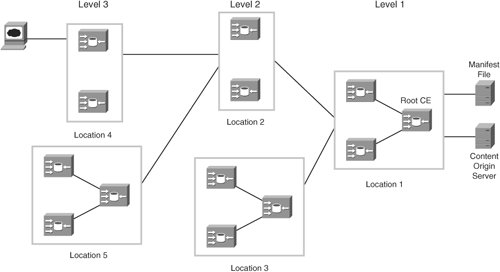 Content distribution is divided into two pieces: content acquisition and pre-positioning. The root CE of the tree, which you should choose as being in close proximity to your origin servers, first acquires the content by retrieving the external manifest file. The root CE parses the XML manifest file, crawls the origin servers for the content specified in the manifest entries, and acquires the content into its cdnfs. Once acquired, the root CE can then pre-position the content to the CEs located downstream in location tree by using either unicast-pull or multicast-push distribution, depending on your preference. As you learned in Chapter 5, "IP Multicast Content Delivery," multicast conserves bandwidth consumption by delivering content to end-devices with only a single flow of the content on any link in the network at a given time. In contrast, the CEs themselves can unicast-pull the content directly from the origin servers, potentially replicating content on individual links on the network. Unicast-pull is desirable for networks with few CEs; whereas, in large networks with numerous CEs, you should use multicast to avoid flooding resources during content distribution. In Chapter 13, you learned how to accelerate static and streaming content delivery by configuring your CEs to cache origin server content on-demand, to the benefit of subsequently requesting users. That is, the CE inspects live client requests and unicast-pulls content directly from your origin servers located on the Internet or within your corporate resources. Additionally, you learned how to configure your CEs to preload content in advance of user requests by unicast-pulling objects from specific origin servers in anticipation of future user requests for the preloaded content. In contrast, with the content pre-positioning model, the root CE of the location tree acquires content that you specify in the manifest file, previous to any client requests. If you configure unicast-pull pre-positioning, receiver CEs initiate the distribution of the content throughout the location tree (that is, they "pull" the content from the root-CE); with multicast-push distribution, the root-CE proactively multicasts the content down the location tree. Creating Location TreesFigure 14-3 shows you how to configure a location in the CDM. You link the locations together into the form of a tree by specifying the parent location in the configuration. To assign CEs to your locations, you specify the location when you create the CE in the CDM, as Figure 14-4 illustrates. Figure 14-3. Configuring a Location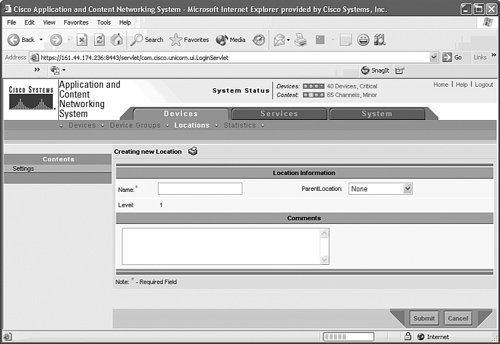 Figure 14-4. Assigning a Content Engine to a Location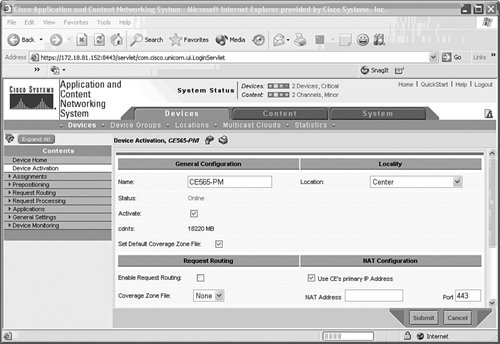 Configuring Content ChannelsTo create a content channel, you must first create a content provider and a website to associate to the channel for the particular content that you want to pre-position. A content provider is an individual or group of individuals within your organization that is responsible for creating and maintaining the content that you are configuring for pre-positioning. Figure 14-5 illustrates how to configure a content provider in the CDM. Figure 14-5. Configuring a Content Provider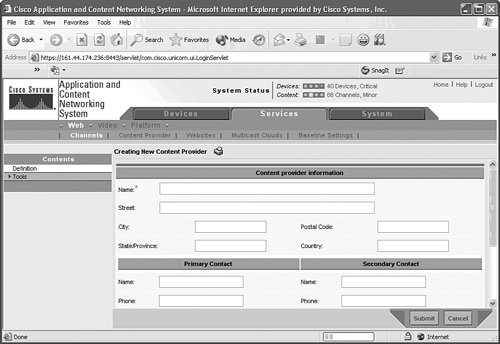 A website specifies the location of the content that the content provider is responsible for creating and maintaining. To integrate Cisco IP/TV into your ACNS network, select the website as the IP/TV Program Manager IP address or hostname. For more information on IP/TV and ACNS integration, see the section called "Creating Scheduled Live and Rebroadcast Programs in ACNS" later in this Chapter. Figure 14-6 illustrates how to configure a website in the CDM. To create the channel, you must specify the content provider and website you created previously. For live channels, make sure that you click on the "Live Channel" checkbox in the channel configuration. You also specify the channel quota in terms of cdnfs disk space, as Figure 14-7 illustrates. Figure 14-6. Configuring a Website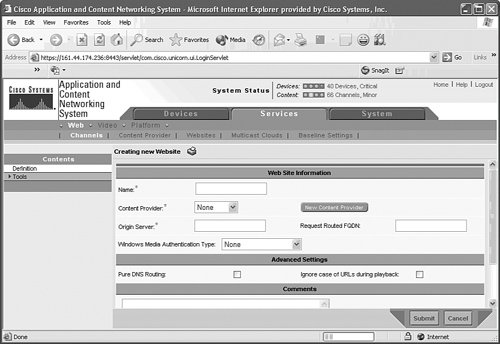 Figure 14-7. Configuring a Content Channel You should set the priority of the channel, so that the root-CE knows which channels are of higher importance and therefore which channels it should distribute before the others. The priorities are High, Normal, and Low. You can configure the root-CE to mark packets with DSCP values for individual channels within the configuration in Figure 14-7. Alternately, you can also have the root-CE mark the IP DSCP value for packets, depending on the priority that you assign to the channel, as Figure 14-8 illustrates. Figure 14-8. Packet Marking Based on Channel Priority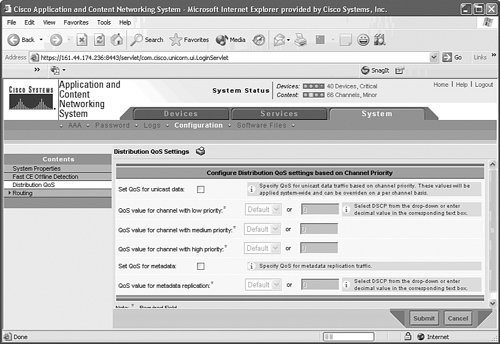 CEs in your location tree exchange meta-data describing the content being pre-positioned. You can also mark these packets from the CDM GUI in Figure 14-8. You subscribe CEs to the channel's content by assigning CEs to the channel in the CDM. Figure 14-9 shows how to subscribe CEs to a channel. Figure 14-9. Subscribing CEs to a Channel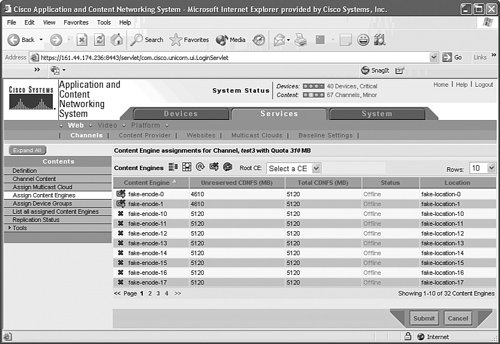 You can assign a root CE to a channel when you assign CEs to the channel, as Figure 14-9 illustrates. |
EAN: 2147483647
Pages: 178